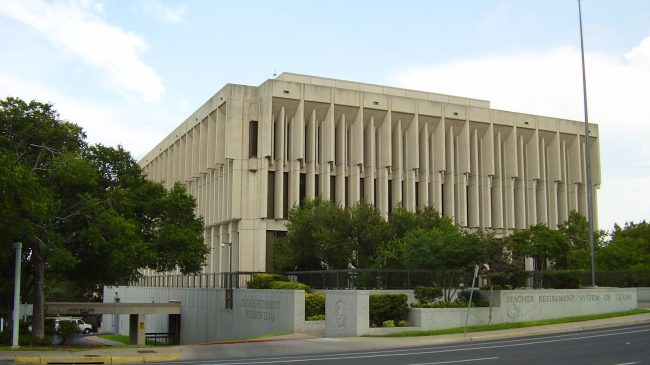The Teacher Retirement System (TRS) of Texas recently reduced its assumed rate of return from 8 percent to 7.25 percent. While the board’s decision will increase the system’s reported liabilities, it is consistent with sound actuarial practices and need not have the dire consequences critics predict.
The new return assumption was recommended by Texas TRS’ actuarial consulting firm, Gabriel, Roeder, Smith & Company (GRS). As we recently reported, GRS is the dominant actuarial firm in the public pension universe, so its recommendations carry authority. In its most recent actuarial experience study for Texas TRS, GRS justified its recommendation as follows:
Based on the current capital market assumptions from Aon, TRS’ investment consultant, and the System’s target asset allocation, the median expected geometric returns over a 10 and 30 year time horizon are 7.14% and 7.34%, respectively. To verify those estimates we used eleven other independent sources and the average result from that survey was 7.07% and 7.32%. Based on the current duration of the liabilities of TRS and recognizing the impact cash flow has on the accumulation of assets, we believe the preferable time horizon for setting this assumption to be approximately 20-25 years. 7.25% would be very close to the midpoint of the 10 and 30 year results above.
The projections GRS used are consistent with the McKinsey’s view that returns on US equities are likely to be lower than they were from 1995-2014 due to population aging, the bottoming out of interest rates, greater competition from emerging markets, and other factors.
Further, Texas TRS’ lower return assumption is in-line with other systems. The California State Teachers’ Retirement System (CalSTRS), the nation’s largest teacher pension system has adopted a 7 percent investment return assumption, the same as the Illinois Teachers’ Retirement System. The District of Columbia’s system is even more conservative, using an assumed return rate of just 6.5 percent, and last year Michigan adopted a 6 percent assumed return for its new tier of teacher pensions.
As is the case with most public pension systems, Texas TRS’s liabilities are discounted by its assumed rate of return. The lower investment return assumption causes reported liabilities to increase. According to GRS, the assumption changes — including the lower rate of return, a lower inflation rate, and other revisions — raise the reported value of actuarially accrued liabilities by 5.7 percent to $192 billion.
As a result, Texas is forced to recognize it has been underreporting the value of its unfunded liabilities and additional pension contributions will be required to amortize the system’s pension debt, which GRS now pegs at $46 billion. This higher level of reported unfunded obligations has triggered worries on the part of teachers and their unions.
Teachers’ union officials and members protested at the pension board’s office and spoke out in opposition to the investment return assumption at the board meeting on July 27. According to the Texas Tribune, “Texas has a number of retired teachers now worried that their pensions may be lowered next year.”
This concern is ill-founded since benefits for current retirees are locked in: they would only be at risk if the system ran out of assets. With TRS holding an investment portfolio of $146 billion, the probability of benefit cuts is virtually zero.
By contrast, if Texas TRS had not made this change the system would continue to be overestimating the value of future investment earnings and would thus be underreporting the value of today’s unfunded liabilities.
Of course, changing the accounting is only one step; now the legislature must authorize the contribution increases necessary to restore plan solvency, thereby ensuring that all promised benefits are paid to active and retired teachers. Texas TRS will request a contribution rate increase of between 1.5 percent and 2 percent of covered payroll. Pension reform advocates are unlikely to oppose this hike since it is necessary to move the system toward full funding.
Retirees and union representatives also expressed concern that the assumption change will forestall cost of living increases. Indeed, GRS did not project any cost-of-living adjustments (COLAs) in its analysis. However, Texas TRS has no policy of providing regular COLAs. The last adjustment was included in Texas SB 1458 (2013), which also increased pension contribution rates. New state legislation could once again provide a COLA while ensuring that the state’s contribution rate is sufficient to meet the needs of both current and future retirees.
Stay in Touch with Our Pension Experts
Reason Foundation’s Pension Integrity Project has helped policymakers in states like Arizona, Colorado, Michigan, and Montana implement substantive pension reforms. Our monthly newsletter highlights the latest actuarial analysis and policy insights from our team.

